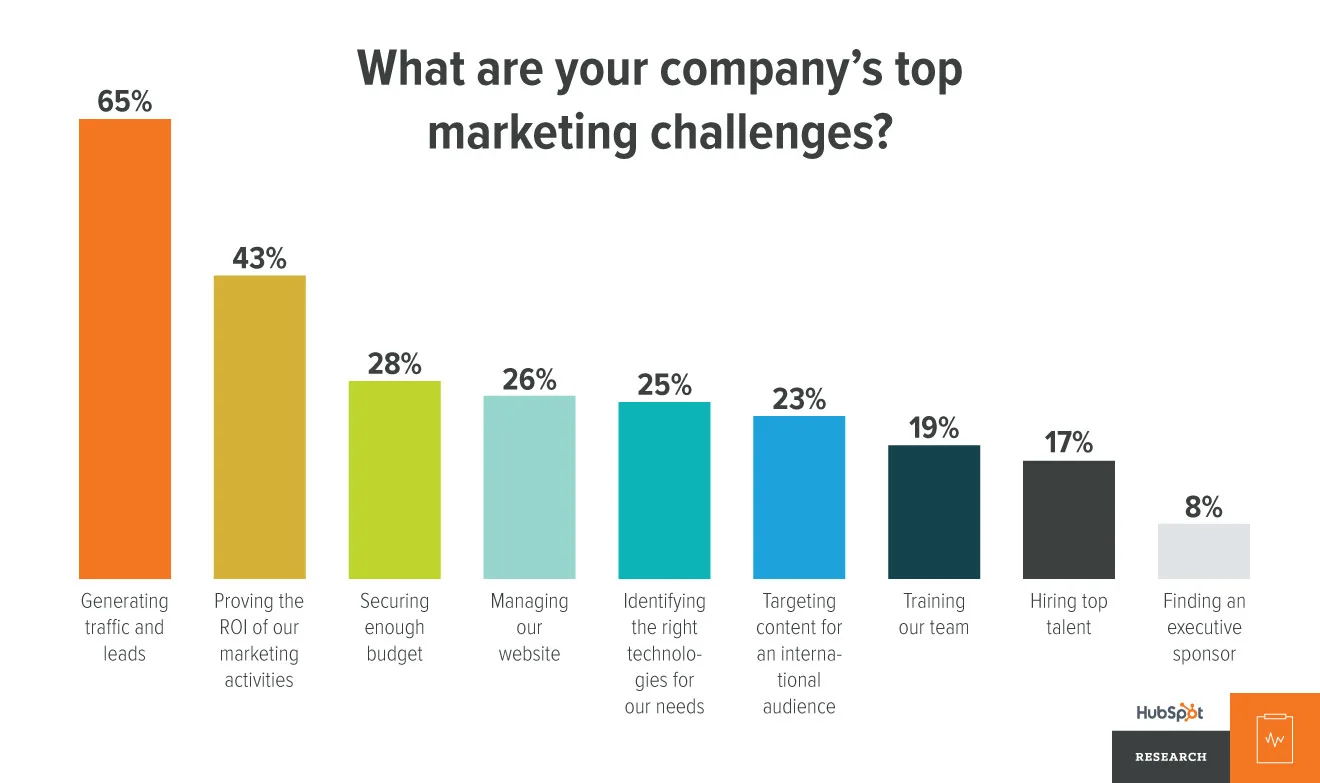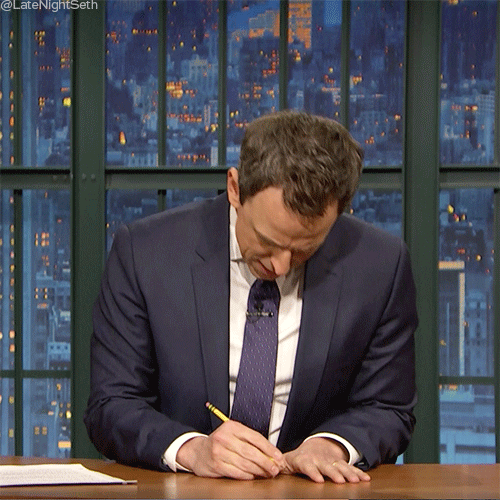Ever found yourself trying to craft that perfect headline or email and thought, “Man, I wish I had killer copywriting skills?” You’re not alone.
Copywriting is the lifeblood of marketing, pulling in eyeballs, making those clicks irresistible, and boosting conversions like you wouldn’t believe.
And if you’re wondering how long it takes to learn this game-changing skill, you’re in the right place.
A whopping 65% of businesses identify generating traffic and leads as their biggest challenge, according to HubSpot.

But guess what? With the power of words, you can not only attract those elusive leads but also turn them into loyal customers.
And no, it doesn’t take an eternity to learn. With the right tools, strategies, and a sprinkle of dedication, you can be on your way to becoming a copywriting rockstar.
Here’s how long it takes to learn and master copywriting.
The Basics of Copywriting
Alright, let’s kick things off by diving into the nitty-gritty of copywriting.
What’s Copywriting, Anyway?
In its essence, copywriting is the art of crafting words that sell. But it’s more than just throwing together catchy phrases. It’s about understanding your audience, tapping into their desires, and giving them a nudge (sometimes a big push) to take action.
The Big Objective
The main aim? Drive action. Whether it’s getting someone to sign up for your newsletter, download an e-book, or pull out their credit card, every word you jot down should have purpose. If your copy isn’t pushing the needle forward, it’s time for a redo.
Words That Influence
Did you know that changing a single word in your CTA can skyrocket your conversion rate by up to 16%? Crazy, right? That’s the magic of copywriting. It’s not just about being wordy; it’s about being effective. The right words can be the difference between a user bouncing off your page and one who sticks around and converts.
Knowing Your Audience Like the Back of Your Hand
The cornerstone of effective copywriting? Knowing your audience. It’s not just about demographics like age or location. Dive deeper. What keeps them up at night? What are their pain points? What’s their language? Organize all of this into a persona you can reference while writing.

Mixing Art with Science
Yeah, copywriting is an art. But don’t forget the science behind it. Metrics like conversion rates, bounce rates, and click-through rates are your friends. They give you tangible insights, showing you what works and what doesn’t. Always be ready to tweak and test.
Factors in Learning Copywriting
There are many different factors that play into how long it’ll take you to learn copywriting. Here are a few.
1. Personal Experience & Background
If you’ve already dabbled in writing or marketing, you’ve got a leg up! It’s like having a little cheat code. For instance, journalists transitioning to copywriting can leverage their tight, punchy writing style, giving them a head start. But don’t sweat it if you’re starting from scratch—everyone has to start somewhere, right?

2. Your Learning Approach
Everybody learns differently. Some people need to do it hands-on while others can read about copywriting and become masters. So, are you self-teaching through YouTube and blogs, enrolling in structured online courses, or maybe seeking mentorship? Your path can either fast-track you or give you some scenic routes.
3. Dedication and Time Commitment
Remember cramming for exams in school? Yeah, that won’t cut it here. Consistency is key. A study from the Medical Research Council Institute of Hearing Research found that consistent, shorter learning sessions are more effective than marathon sessions. So, committing even just 30 minutes a day can make a big difference.
4. Practice and Application
Theory’s great and all, but copywriting is a hands-on game. The more you practice, the better you get. It’s like going to the gym but for your brain. Writing daily, seeking feedback, and constantly refining will get you closer to that copywriting mastery.
5. The Feedback Loop
Let’s get real: Feedback might sting sometimes, but it’s golden. I suggest getting a mentor or joining a community like my Discord to get feedback and critique from other writers.
Stages of Learning Copywriting
Let’s break down how to learn copywriting into stages, so you know what’s coming your way.
1. Beginner: Baby Steps & Big Dreams
This is where everyone starts. No shame, just gains.
- Grasping the Fundamentals: Dive into what makes copy tick. It’s like learning your ABCs, but way more fun.
- Understanding the Target Audience: Before you sell to them, get to know them through proper research.
- Basic Writing Techniques: Clean, concise, and compelling. Get these three Cs down, and you’re on the right path.
2. Intermediate: Flexing Those Copy Muscles
You’ve got the basics down. Now, let’s level up.
- Writing for Different Mediums: From web pages to emails, each platform has its quirks. Adaptability is key.
- Incorporating Psychological Triggers: Emotions drive decisions. Did you know that consumers’ emotional response to an ad has a far greater influence on their reported intent to buy a product than the ad’s content? Mind-blowing, right?
- Analyzing & Improving: This is where data becomes your best bud. Dive into metrics, see what’s working, and refine your approach.
3. Advanced: The Copywriting Jedi Stage
Welcome to the big leagues. This is where you own the game.
- Mastery of Persuasion Techniques: It’s not just about writing; it’s about influencing. Think of yourself as a word-wielding wizard.
- Specializing in Niches: Whether it’s tech, fashion, or B2B, find your groove and dominate it.
- Leading Campaigns & Mentoring Others: Share the wealth, teach the next generation, and watch your legacy grow.
The Importance of Continuous Learning
In the fast-paced world of digital marketing, there’s no ‘end game.’ The goalposts keep shifting, and staying still means getting left behind. Let’s dive into why continuous learning is the secret to staying on top of your copywriting game.
1. The Ever-Evolving Consumer Behavior
Today’s consumers are a fickle bunch, always evolving, always adapting. According to Forrester Research, 77% of consumers have chosen, recommended, or even paid more for a brand that provides a personalized experience. So, if you’re not keeping up with the latest trends and insights, you’re leaving conversions on the table.

2. Platforms & Technologies: The Constant Game-Changers
Remember when Facebook was just for college kids? Or when TikTok was that weird new app? Platforms evolve, and so must your copy. Adaptability isn’t just a nice-to-have; it’s essential.
3. Fresh Perspectives = Fresh Copy
Stale copy is as good as no copy. Continuous learning offers fresh angles, ideas, and perspectives, ensuring your content stays as fresh as a daisy (or a trendy meme).
4. The Competitive Landscape is No Joke
With millions of new content pieces hitting the web daily, staying ahead of the curve is crucial. So, if you’re not upping your skills, someone else is.
5. Lifelong Learning = Lifelong Earning
The more you know, the more value you bring to the table. And in the world of freelance or agency copywriting, that means cha-ching!
How to Learn Copywriting Faster
Feeling the itch to fast-track your copywriting journey? I get it—time’s money, and we all want to become pros yesterday. But worry not, here’s what you need to do.
1. Interactive Learning: Get Your Hands Dirty
Ditch the passive reading for a bit and go hands-on. Studies, like the one from Psychological and Cognitive Science, show that active learning can boost retention rates. Join workshops, write daily prompts, or even start your own blog. Dive in, headfirst!
2. Find a Copy Buddy or Mentor
Ever heard the phrase, “two heads are better than one?” Well, it’s spot-on. Pairing up with a buddy or finding a mentor can give you invaluable feedback and new perspectives. Plus, nothing beats real-world insights from someone who’s been there, done that.
3. Immerse in Real-World Examples
Breakdown successful ads, emails, and sales pages. Why did they work? What made them stand out? Swiping and reverse engineering advertisements are some one of the best ways to master copywriting.
4. Chunking: Bite-Sized Learning
Taking in too much at once can be overwhelming. The solution? Chunking. This method found that information grouped into bite-sized chunks is way easier to digest and remember. So, instead of gulping down everything, savor it piece by piece.
5. Tech to the Rescue: Use Learning Apps & Tools
In our digital age, there’s an app for everything—including copywriting. Tools like Grammarly can refine your grammar, Hemingway can simplify your sentences, and platforms like Coursera offer killer courses. Embrace tech, and let it be your guide.
6. Consistent Feedback Loop
Write. Review. Refine. Repeat. Consistent feedback is the cornerstone of rapid improvement. Whether it’s peer reviews or customer feedback, soak it up, and iterate. Remember, every piece of feedback is a stepping stone to greatness.
Wrapping Up How Long it Takes to Learn Copywriting
Every marathon starts with a single step. And in this digital age where more businesses use content marketing to reach their audience, mastering copywriting isn’t just an option—it’s an imperative.
Now, while self-learning is great, sometimes you need that extra oomph—a structured path to make your journey smoother and more rewarding.
So, if you’re revved up and ready to dive deeper, to truly hone that craft and emerge as a copywriting rockstar, check out my copywriting courses.
They’re packed with insider tips, real-world examples, and actionable strategies that’ll elevate your writing game like you wouldn’t believe.














